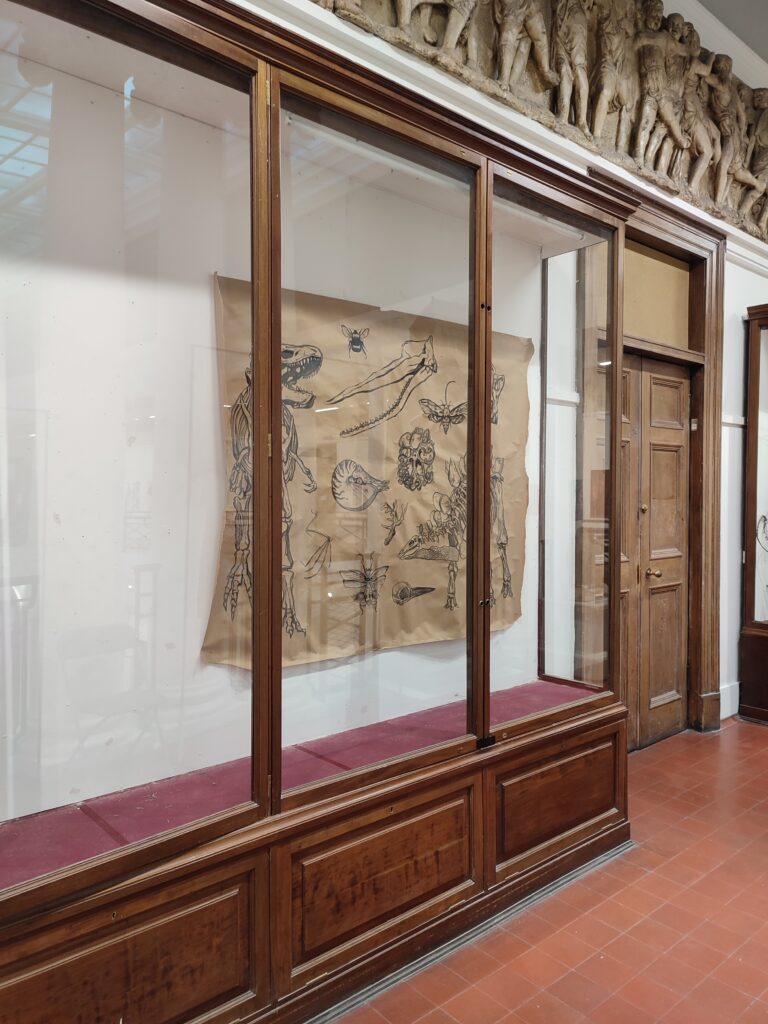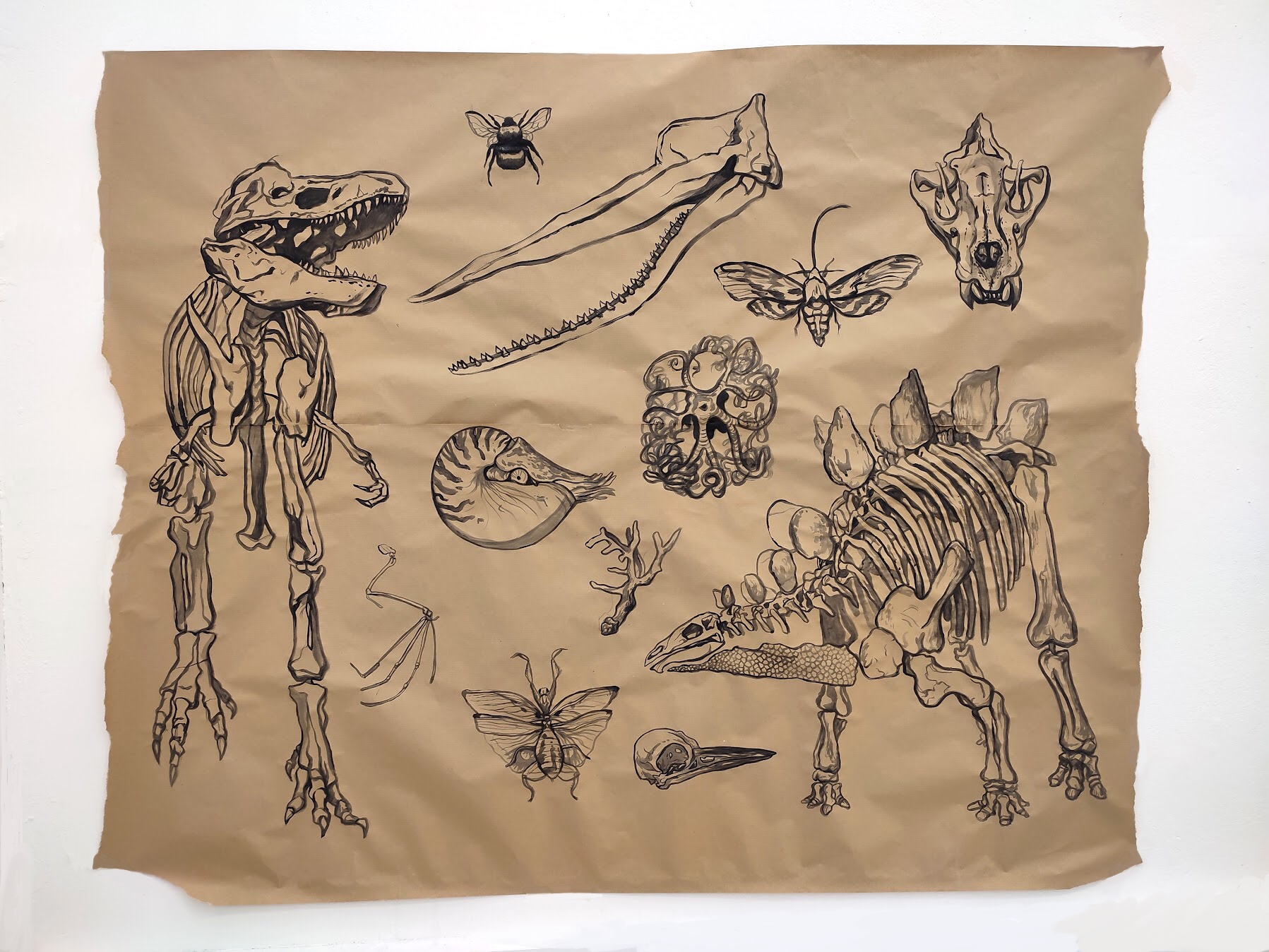Project 1: Observation
Our first drawing project split us into groups and asked us to produce at least 8 observational drawings in a section of the ECA. I was sent to the Printmaking workshop in week 1 and the North East Building in week 2. This project encouraged us to experiment with drawing materials and processes, so I used a variety of quick media including sharpie, oil pastel, charcoal, and fine liners.
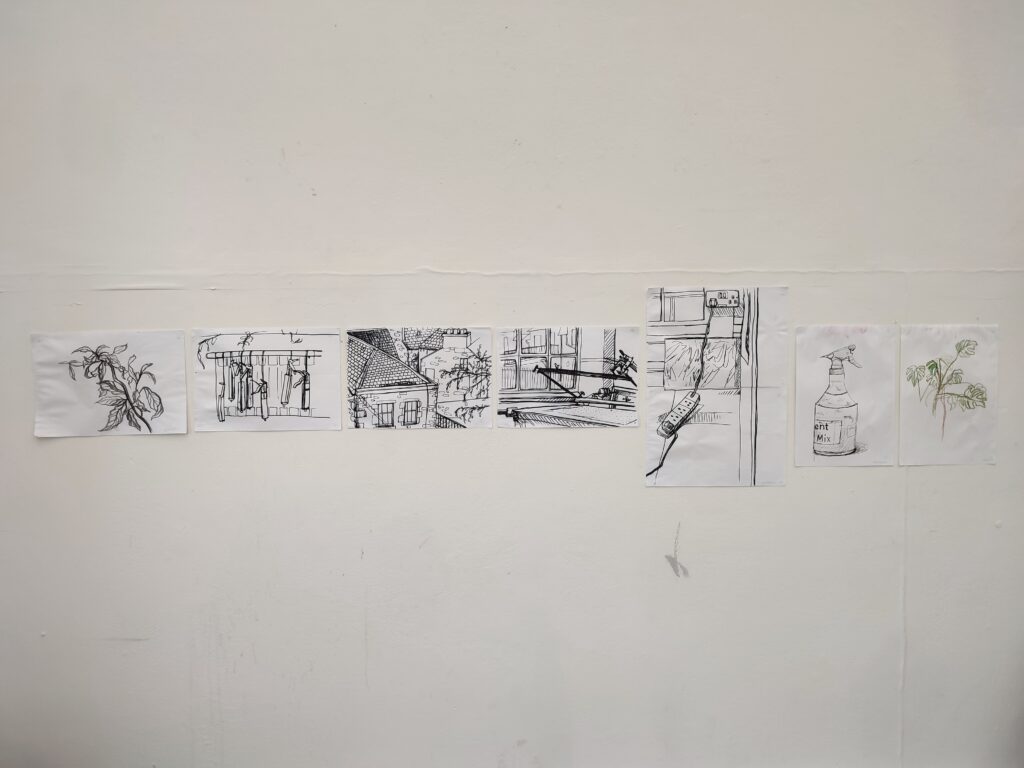

At the end of week 2, we gathered our work to collectively create a ‘map’ of the ECA. It was particularly interesting to see how, despite the range of differing styles and materials used, the work fit together well as a whole.
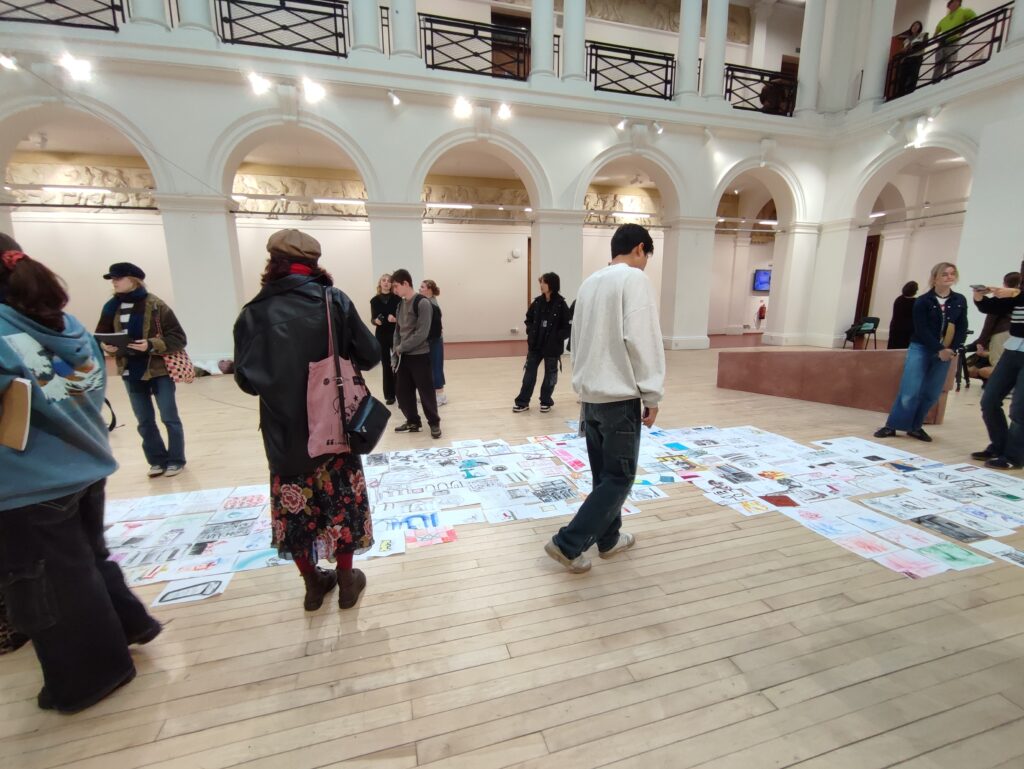
Project 2: Translation

For the Translation Project, we were asked to bring in an image to be put in a bag and drawn from at random. The image we chose was then to be translated into an artwork. I explored both ‘fast’ and ‘slow’ processes, including timed ink drawings focusing on cropping and simplifying limbs from the
image, which I found to be the most successful works. I also used my phone camera to zoom in on the pixels of the magazine cut-out and replicated this using black and white charcoal.
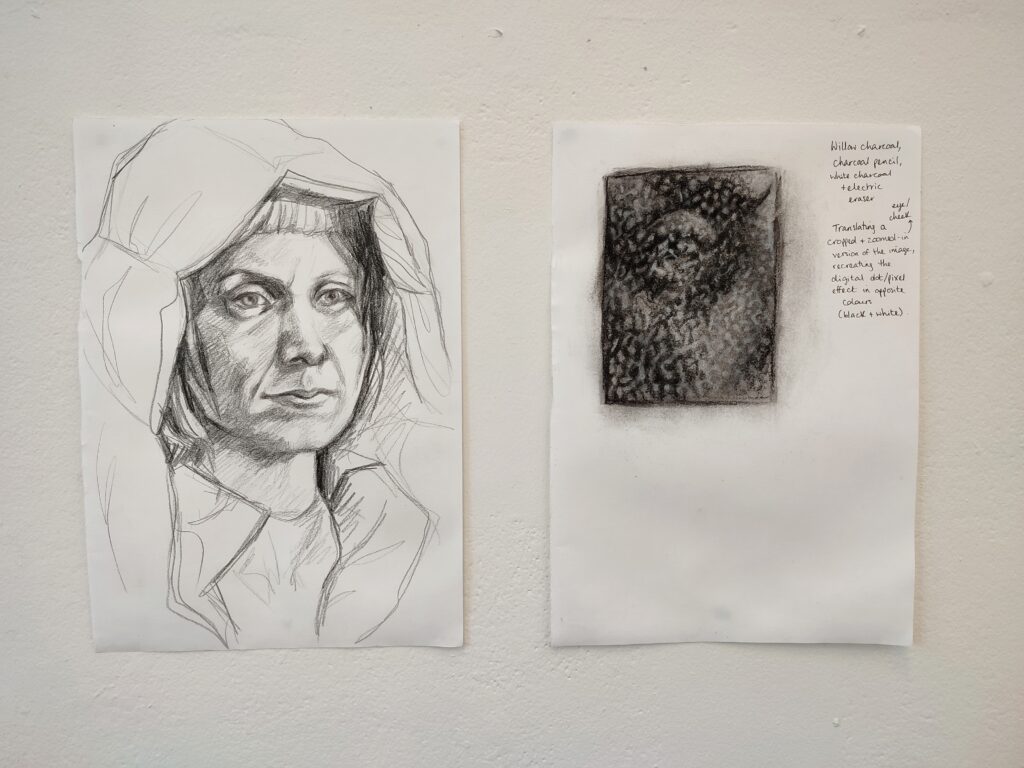



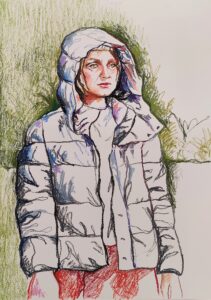
Project 3: Action
The Action Project explored action in drawing, whether that be creating a drawing device or designing a machine. I was inspired by the work of W. Heath Robinson, and decided to draw a machine for mundane everyday actions, using my kitchen as a reference for the scene. However, I wanted to add a contemporary twist to the work, so I took a more modern approach to the drawing using bold fine liners on paper, which was scanned and coloured using Procreate. I then experimented with contextualizing the work, projecting it onto walls to be interacted with and onto my kitchen.

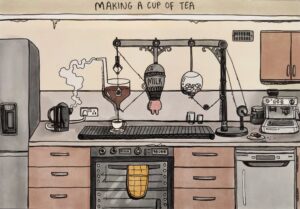
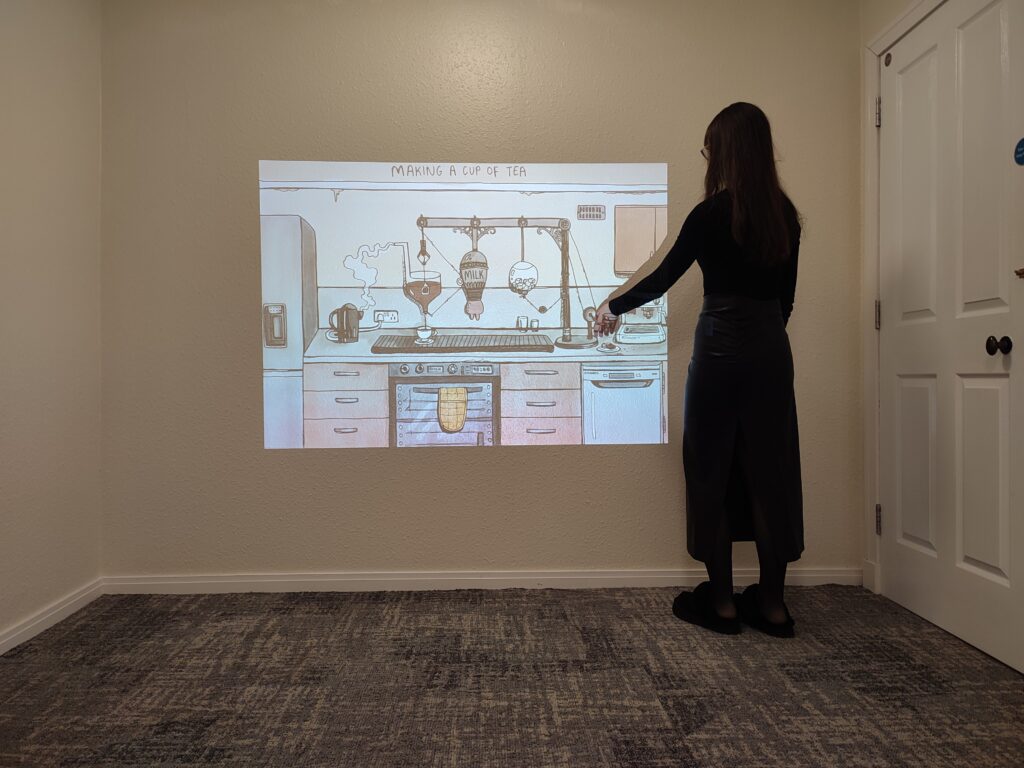

Project 4: Imagination
For the Imagination Project, we were each asked to write 5 nouns and a setting, which were put into bags and drawn from at random in the same fashion as the Translation Project. I picked out ‘ocean reef’ for my setting, as well as ‘dinosaur’, ‘mirror’, ‘braids’, ‘Boba tea’ and ‘Bible’. We could use any number of these nouns in our work, which began with making 12 compositional sketches to explore our ideas. I took inspiration from artists such as Shintaro Miyake, Tove Jansson and Paula Rego’s 1985 acrylic paintings, and decided on a campaign poster effect which resembled those I had seen around the ECA campus. I began with a smaller, more refined illustration using watercolour, coloured pencil and aqua pencils before moving onto a A0 sized version using acrylic paint, god ink, coloured pencil and aqua pencil/pen.
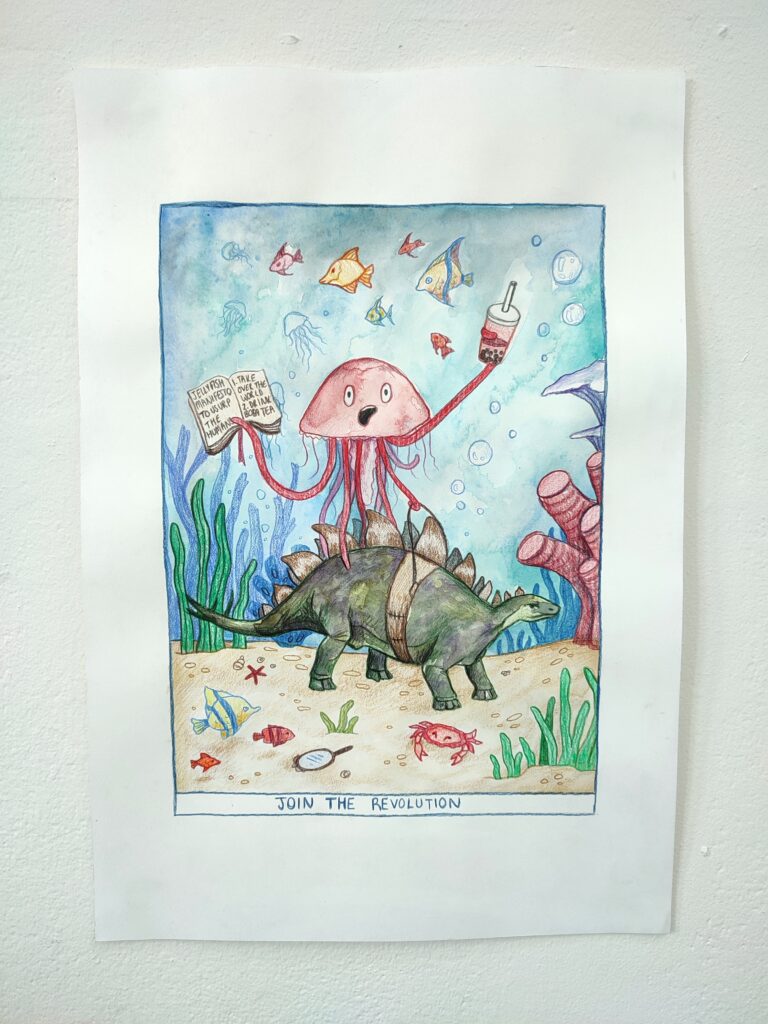
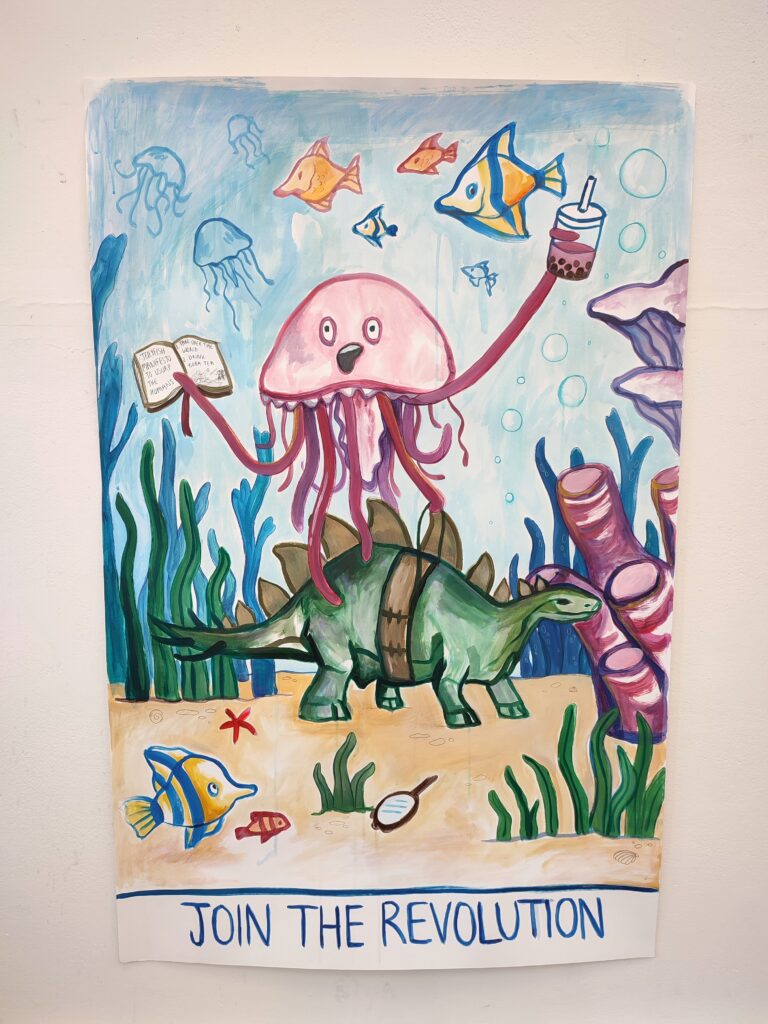
Overall I was very pleased with the outcome of my Imagination Project, as I enjoyed the process and the humour element of the work.
Project 5: Resolution
Our fifth and final project allowed us to expand on one or more of the previous projects to create a body of work on a theme of our choosing. I decided to explore observation further, with the nouns ‘ocean setting’ and ‘dinosaur’ from the Imagination Project giving me the idea to use the National Museum of Scotland as the influence for my work. I love visiting the museum, so I took photographs of the various skeletons and species on display as references for my drawings. Also inspired by the work of artists like David Nash, Lisa Milroy and Michael Craig-Martin, I used black acrylic paint on two sheets of brown textured paper (stuck together) as a surface for my inaccurately scaled depictions of these objects. I really like the flat-lay taxidermy effect and how the watered-down acrylic paint enabled me to produce tonal variation, which combined nicely with the subtle lines on the crinkled, ripped-edge paper. Furthermore, this work took me to new scales at approximately 165x140cm.
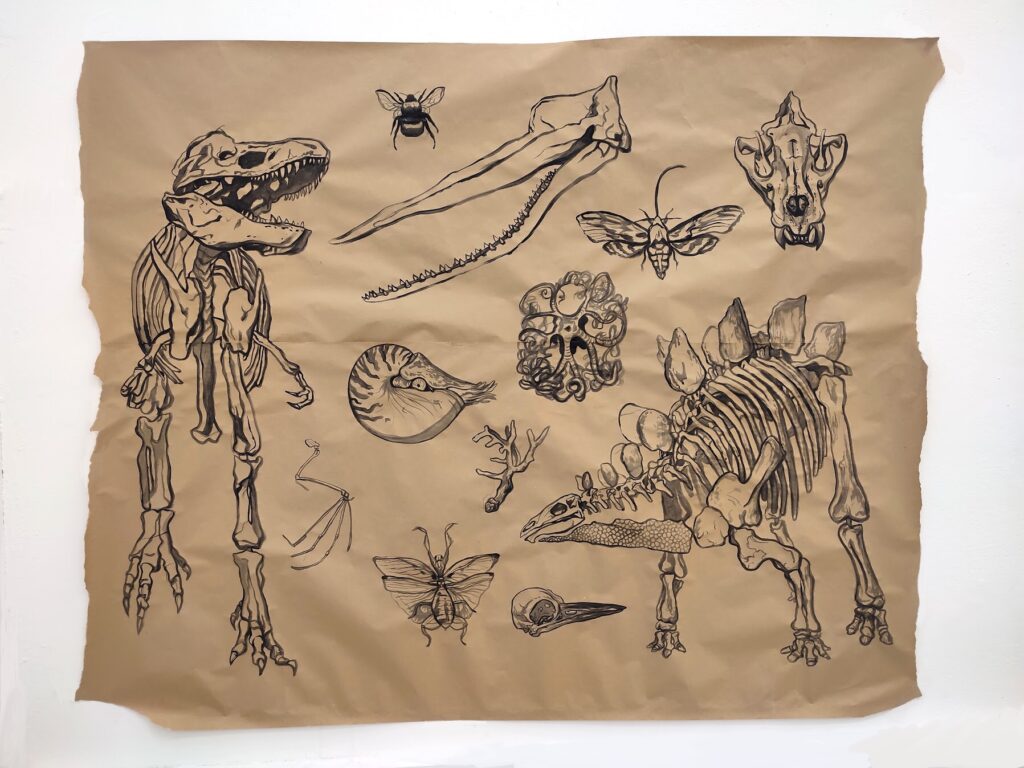
To install the work, I used panel pins to pin the drawing on the wall inside a cabinet on the ECA mezzanine in the style of a taxidermy, which I think reflected the nature of the work well. I am very pleased with the outcome of the project and those previous, taking me to new scales, media and levels of experimentation. The course has pushed me to work outside of my comfort zone and consider how my work will be received through methods of installation, significantly encouraged by my tutors John Brown and Gemma Coyle.

